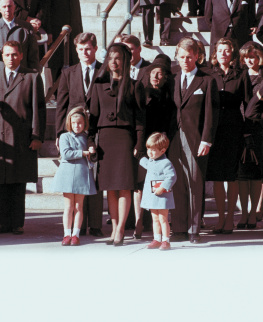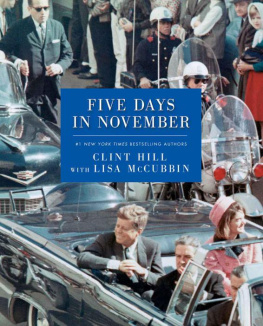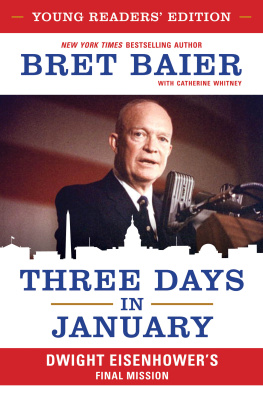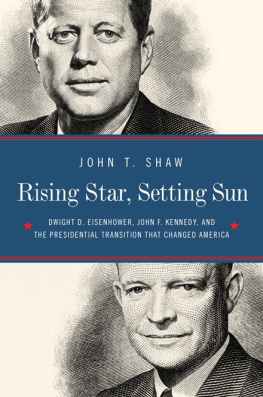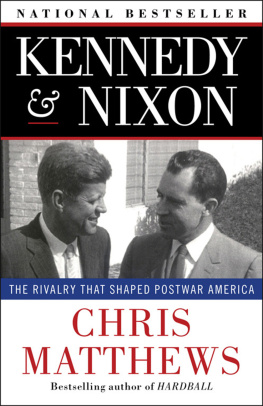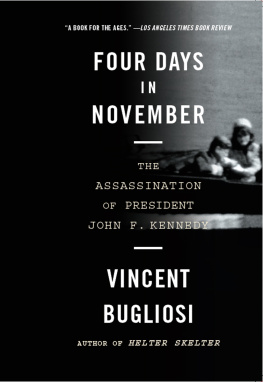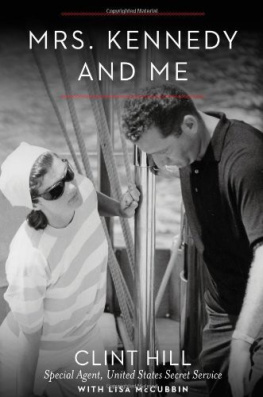Thank you for downloading this Gallery Books eBook.
Join our mailing list and get updates on new releases, deals, bonus content and other great books from Gallery Books and Simon & Schuster.
C LICK H ERE T O S IGN U P
or visit us online to sign up at
eBookNews.SimonandSchuster.com
We hope you enjoyed reading this Gallery Books eBook.
Join our mailing list and get updates on new releases, deals, bonus content and other great books from Gallery Books and Simon & Schuster.
C LICK H ERE T O S IGN U P
or visit us online to sign up at
eBookNews.SimonandSchuster.com
Contents
This book is dedicated to the men and women of the United States Secret Service, past and present, who have worked tirelessly to keep the occupant of the Office of the President of the United States in a secure environment, through good times and bad, without regard to the political party affiliation of the protectee. You served long, tedious hours, under stress and in the face of danger, without complaint to ensure continuity of our government as directed by the Constitution and its amendments. No matter the challenges or obstacles, you remained true to the Secret Service code of honor: WORTHY OF TRUST AND CONFIDENCE. I am proud to have served in your ranks.
INTRODUCTION
Walking Beside History
A s a Special Agent in the United States Secret Service, I had the honor and privilege of serving five presidentsDwight D. Eisenhower, John F. Kennedy, Lyndon B. Johnson, Richard M. Nixon, and Gerald R. Fordthree Republicans and two Democrats. From my unique vantage point, I had the rare opportunity to observe the human side of these menthe most powerful men in the worldas each dealt with the enormous responsibilities and unforeseen challenges thrust upon them, and how their individual characters and personalities affected grave decisions.
My seventeen years in the Secret Service spanned the period that encompassed the U-2 spy incident; the Cold War; the Cuban Missile Crisis; the assassinations of President John F. Kennedy, Martin Luther King Jr., and Robert F. Kennedy; the civil rights movement, riots and burning of major U.S. cities; the Vietnam War; Watergate; and the resignations of Vice President Spiro T. Agnew and President Nixon. In less than two decades, America went from being unquestionably the most respected and admired nation in the world to a country whose image had become tarnished by violence, scandal, and deceit.
It is interesting to note that of these five presidents, only Eisenhower had a normal run as presidentelected by the people and serving two full terms. Kennedy was elected in 1960 by the slimmest of margins, and his term lasted just one thousand days, cut short by an assassin. Suddenly, the vice president became president. Johnson was reelected the following year, but when the demands of the office and the casualties of the Vietnam War became more than he could bear, he chose not to run for a second term. Nixon was elected in 1968, and again in 1972, but in the wake of the Watergate scandal, he became the first United States president to resign, in 1974. A year earlier, when Nixons vice president, Spiro Agnew, resigned in disgrace, Nixon appointed Gerald Ford as vice president. Thus, upon Nixons resignation, Ford became president, never having been elected to the office.
It was a turbulent time, and there I was, in the middle of it all.
As with our two previous books, my talented writing partner, Lisa McCubbin, and I have attempted to bring history to life through my experiences. While Mrs. Kennedy and Me focused on my interactions with Jacqueline Kennedy, and Five Days in November detailed those tragic days surrounding the assassination, the Kennedy section in this book focuses on my observations of and interactions with President Kennedy. There is unavoidably some overlap, but the recollections of my years with Eisenhower, Johnson, Nixon, and Ford are revealed here for the first time.
There is no doubt that the assassination of President Kennedy was a defining moment for me, and it would affect me on many levels for the rest of my life. I was thrust onto the pages of history, but it has often bothered me that I would be remembered solely for my actions on that one day. For there was much that led up to that moment, and much that followed.
Like the five presidents I served, there were many things that influenced the decisions I made, the actions I took, the man I became.
It has indeed been an extraordinary journey.
PART ONE
With President Eisenhower
When I was sworn into the U.S. Secret Service as a Special Agent in 1958, President Dwight D. Eisenhower was well into the second year of his second term. As the Supreme Commander of the Allied Forces in World War II, he was credited with liberating Europe, which made him a worldwide hero. General Eisenhower had entered politics as a moderate Republican and had earned the respect of the nation, with 85 percent of the country viewing him favorably. The American people trusted his judgment and leadership during a time when the threat of a nuclear attack by the Soviet Union was a very real fear for all of us.
The Eisenhower era was one of peace and prosperity. Just seven months into his term, Eisenhower had ended the Korean War, and his conservative fiscal policies led to unprecedented expansion. Having seen the numerous benefits of the autobahns in Germany, Eisenhower initiated Americas interstate highway system, which created an abundance of jobs as roads and bridges were constructed across the country.
People were proud to be Americans, proud of our country, and proud of our president.
1
The Secret Dead Body
A ll I could think of as I stared at the dead woman lying on the bed was How the hell are we going to get her body out of here without anyone knowing?
There were only a few hours of darkness left, so some quick decisions had to be made. It was my first month as a Special Agent in the United States Secret Service, and I knew if I screwed this up, my career would be over before it really began.
Fortunately, I had the home telephone number of my supervisor, Earl Schoel, the Special Agent in Charge (SAIC) of the Denver Field Office, in my wallet. I walked quietly downstairs and dialed his number from the phone in the kitchen.
Hello? Schoel answered groggily.
Mr. Schoel, I said, its Clint Hill. Im sorry to call you in the middle of the night, but we have a situation here at the Doud residence.
Few people knew it, but President Dwight D. Eisenhower had ordered part-time Secret Service protection for his eighty-year-old mother-in-law, Mrs. Elvira Doud. There were no outright threats to the presidents mother-in-law, but because she was ill and lived alone, except for a maid and a nurse, there was concern that she could be kidnapped and held for bargaining purposes. Likewise, if there was a major health problem during the night, the agents would have the means to quickly get her the help she needed and also be able to immediately notify the president and Mrs. Eisenhower.
On September 22, 1958, I was given a badge, handcuffs, holster, gun, and ammunition, and officially sworn in as a Special Agent in the United States Secret Service. I was taken out to the shooting range at the U.S. Mint in Denver to make sure I could qualify, and that was it. There was no other immediate training, except for reading the Special Agent Manual. One of my first assignments was on the midnight shift, protecting Mrs. Doud.
Mrs. Doud lived in a three-story brick home at 750 Lafayette Street in Denver, Colorado, and the protection was from seven oclock in the evening until seven oclock in the morning, with one agent on duty from 7:00 p.m. until 11:00 p.m., and another agent taking over from 11:00 p.m. until 7:00 a.m.
Next page

